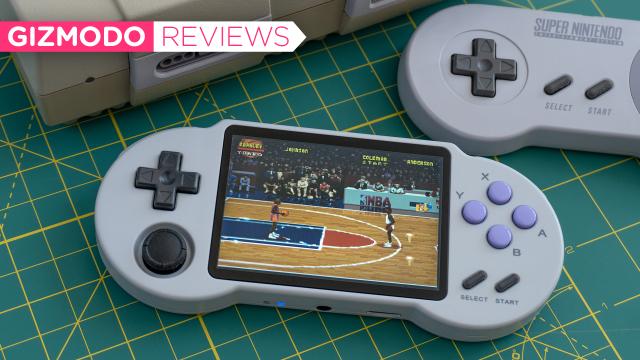The PocketGo handhelds were some of the first portable emulators out of China that delivered a reliable retro gaming experience, but just a year later the consoles are really starting to show their age. The PocketGo S30 is a welcome upgrade, and while its performance still feels a little dated, its design, price, and ease of use make it a solid choice for those curious about these devices.
Note: A sample of the PocketGo S30 was provided to Gizmodo by online retailer Retromimi.
The number of handheld emulators coming out of China increased dramatically last year. Companies like Anbernic managed to hone and perfect the design of their portables with several upgrades released just months apart, but the PocketGo S30 instead completely rethinks the design of its predecessor, the New Pocket Go, with a nod to the Super Nintendo’s gamepads. And although we’ve been assured that 8BitDo had nothing to do with the PocketGo S30, the handheld’s name and design also feels inspired by 8BitDo’s SN30 Pro gamepad.
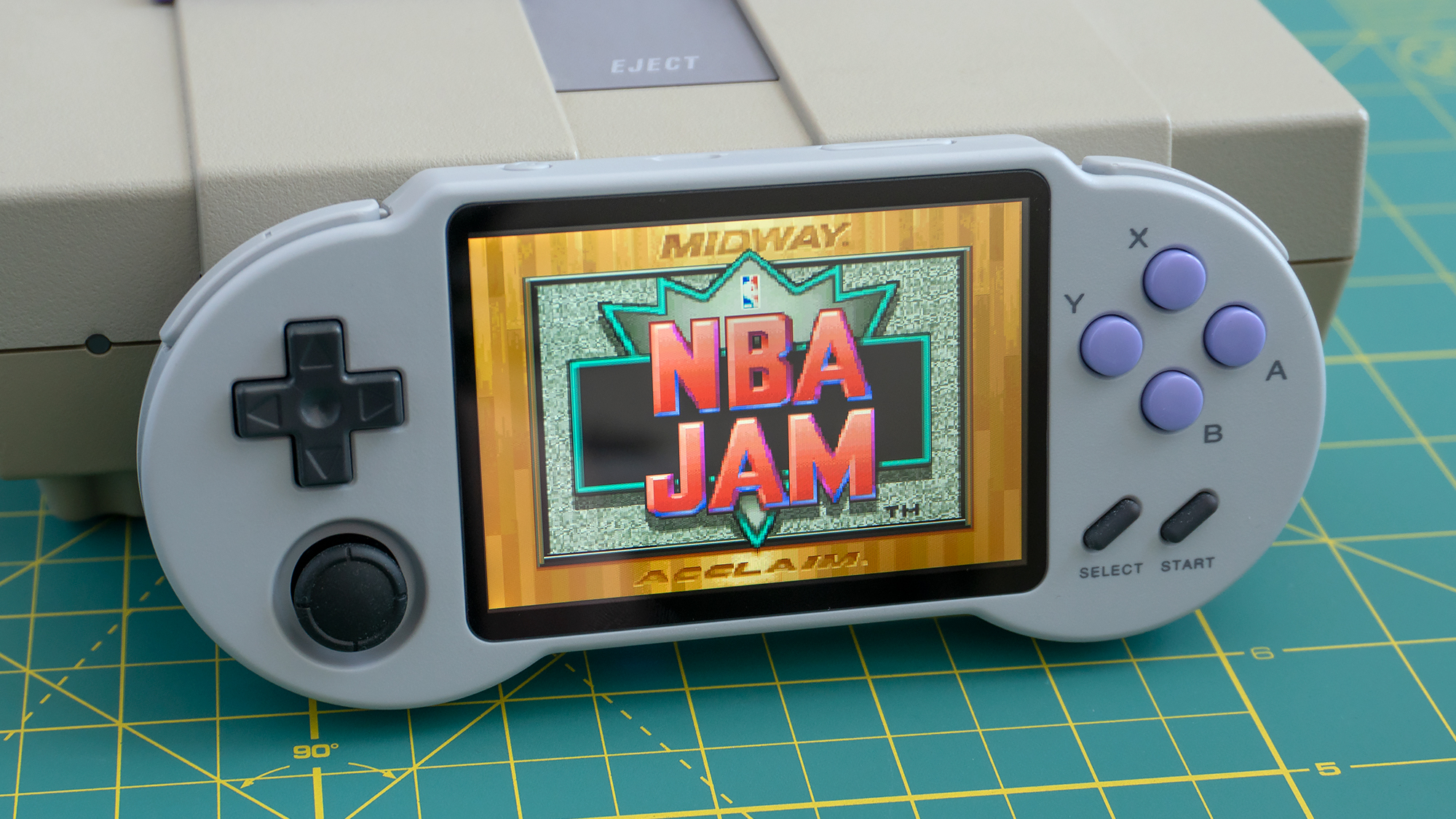
PocketGo S30
WHAT IS IT?
A much needed update to the ageing New Pocket Go that introduces a much improved design and interface
PRICE
$US60 ($79)
LIKE
Streamlined software with emulators pre-configured for optimal performance given the S30's slightly older hardware. The S30 is definitely one of the easiest retro handhelds to get up and running.
DISLIKE
Can really only play retro games up to the original PlayStation era; the location of the analogue joystick isn't ideal for comfortable gameplay.
No matter what its origin story is, and despite the fact that it packs in a quad-core 1.2GHz processor and 512MB RAM that feels more like last year’s hardware specs, the PocketGo S30 is all around a huge improvement over the older New Pocket Go.
The PocketGo S30’s curves feel better in hand, and while it still sports the same 3.5-inch screen as its predecessor (with a bump in resolution to 480 x 320 pixels) the S30’s design somehow makes the screen look slightly larger.
The four-way directional pad and action buttons feel just like Nintendo’s own hardware now, which is obviously a good thing and a nice upgrade, but the biggest improvement on the PocketGo S30 is its analogue joystick. The one included on the New Pocket Go feels like it was added just so “analogue joystick” could be listed in the specs. The old one was impossibly stiff to move around, lacked any kind of grip, was too small, and was altogether unusable for any real gaming. The PocketGo S30 now uses the analogue joystick design you’ll find on almost all of the top retro handhelds, and it feels as responsive and solid as the sticks on the Switch’s Joy-Cons. My only complaint is that it’s situated a little low, which requires some occasional finger contortions to play games that rely on it and the shoulder buttons.
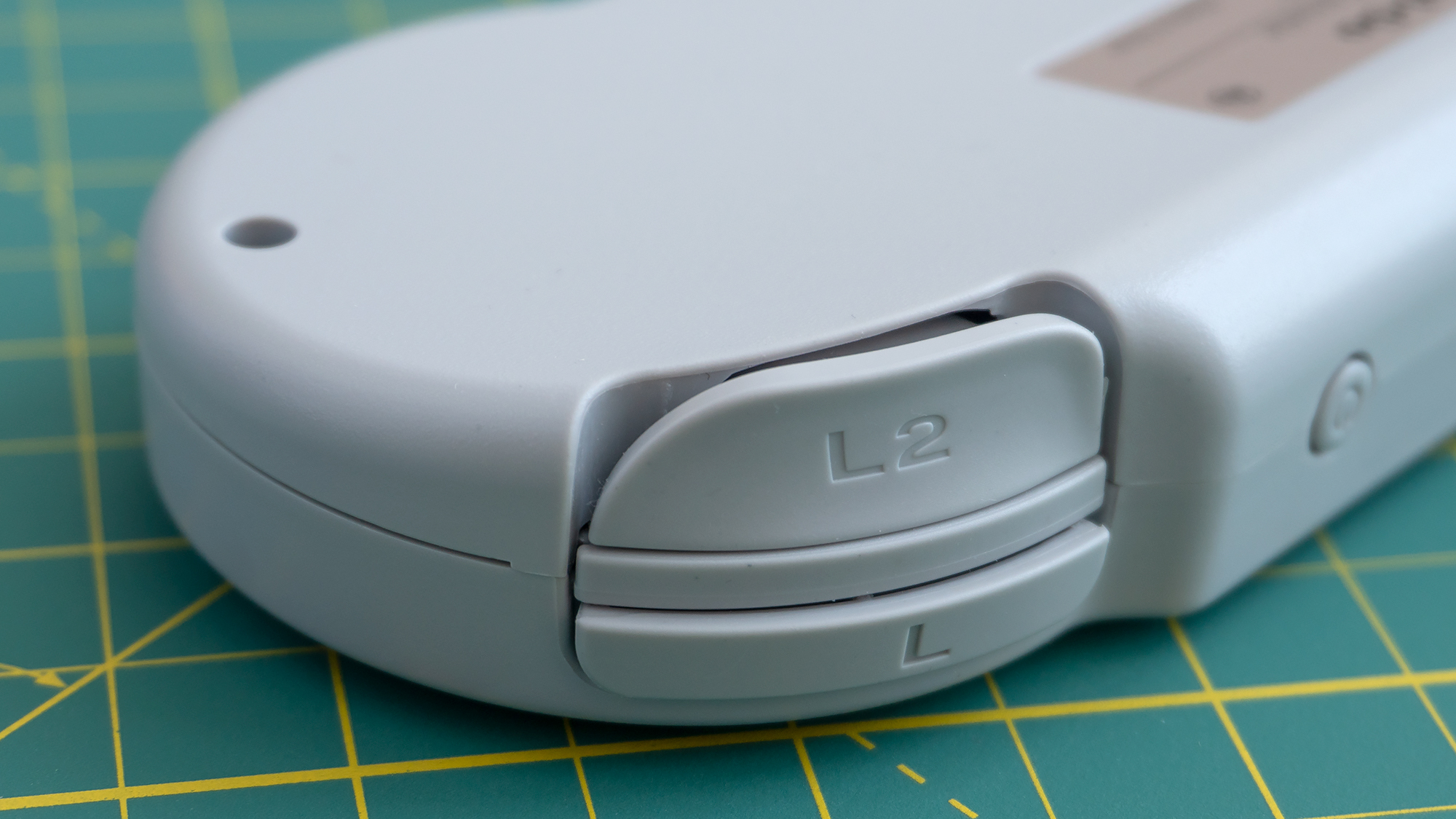
Speaking of shoulder buttons, they’re nice and large on the PocketGo S30, and some of the largest we’ve seen on a handheld emulator to date. Although it should be noted that you don’t press down on the larger R2 and L2 buttons, they instead feel like rocker buttons that really only move when you press on their back edge. It’s different, but not a bad different, because it feels like they actually have more room to move with this approach.

The larger shoulder buttons do come at a cost of portability. The PocketGo S30 has an odd angled design we haven’t really seen on these types of handhelds before, but it’s reminiscent of the design of Tiger Electronics’ old handheld LCD games. Even at its thinnest point at the bottom, the S30 is thicker than the older New PocketGo, and at its thickest it’s larger than even Anbernic’s handhelds. You can still squeeze it into a pocket, but not as easily as your smartphone can slide in there. It’s definitely not a dealbreaker.
The PocketGo S30’s design also does a good job at cleaning up the non-gameplay buttons, with power and a volume rocker on the top alongside a USB-C charging port, and the headphone jack moved to the bottom next to the microSD card slot used for loading ROM files.
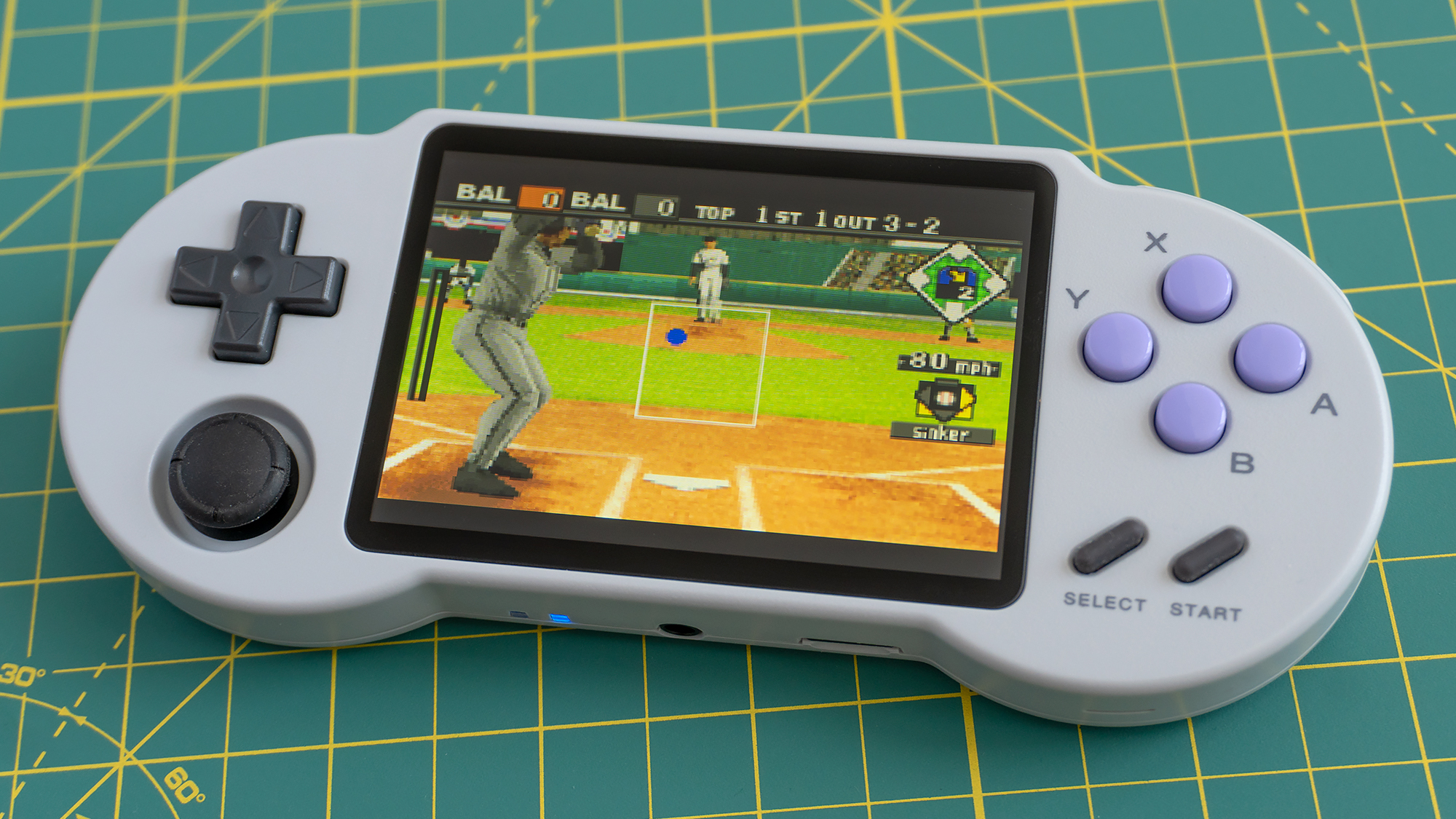
The 3.5-inch screen is good and definitely a step up from the one on the older New PocketGo, but it’s far from the best display you’ll find on a handheld emulator now. Earlier in 2020 it would have been excellent, but unlike the Anbernic Retro Game 350P, the screen isn’t laminated to the display here, meaning there’s a small gap in between which limits viewing angles and simply doesn’t look as crisp. But colours are good, and you’re really only going to find quality discrepancies when comparing the S30 side-by-side with some of the better offerings out there.
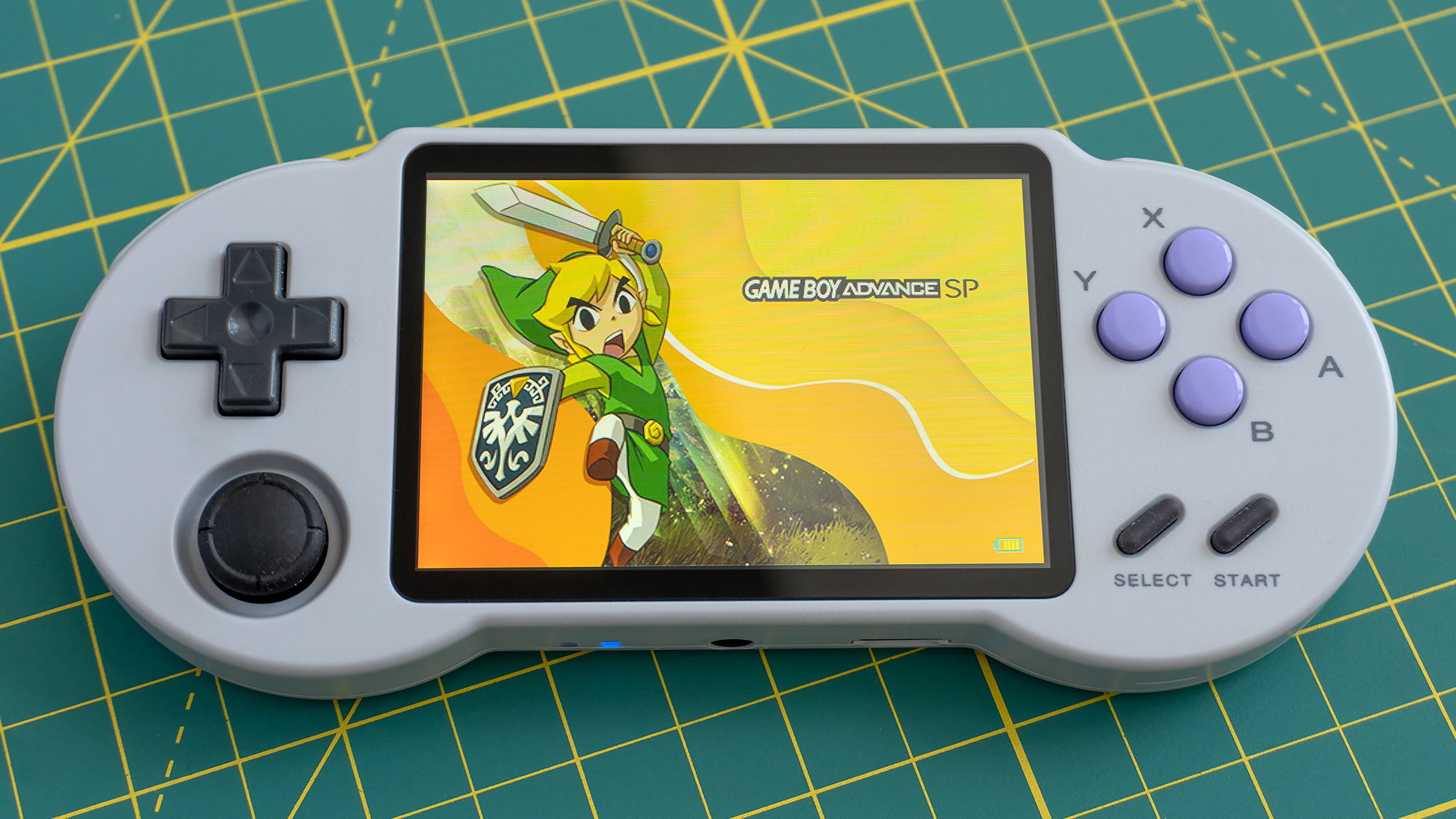
Where the PocketGo S30 really shines, however, is just how easy it is to use. It quickly boots into a really friendly and inviting user interface (albeit one with some questionable use of others’ IP) where you scroll between which emulator you want to use.
It feels a lot less intimidating than the front-ends you’ll find on most other Chinese handhelds. It’s not as easy to use as cartridge-based systems like the Evercade because you’ll need to copy ROM files onto a microSD card into specific folders for each console, and from my testing the S30 frustratingly ignores any sub-folders you add. But that’s about as technical as you need to get to make the PocketGo S30 work. Just keep in mind that playing games using ROM files instead of the original cartridges or discs is a legal grey area, and sourcing those files is another challenge that some may not be comfortable with.
It’s not necessarily baby’s first handheld emulator, though. The PocketGo S30 still lets you quickly access the settings menu for each of the pre-installed emulators so you customise their performance to your liking. Some gamers hate the look of retro games stretched to fit modern screen dimensions while others can’t stand having empty black bars on the sides either. The PocketGo S30 doesn’t limit customizability, it’s just not as front and centre as it is on other devices.
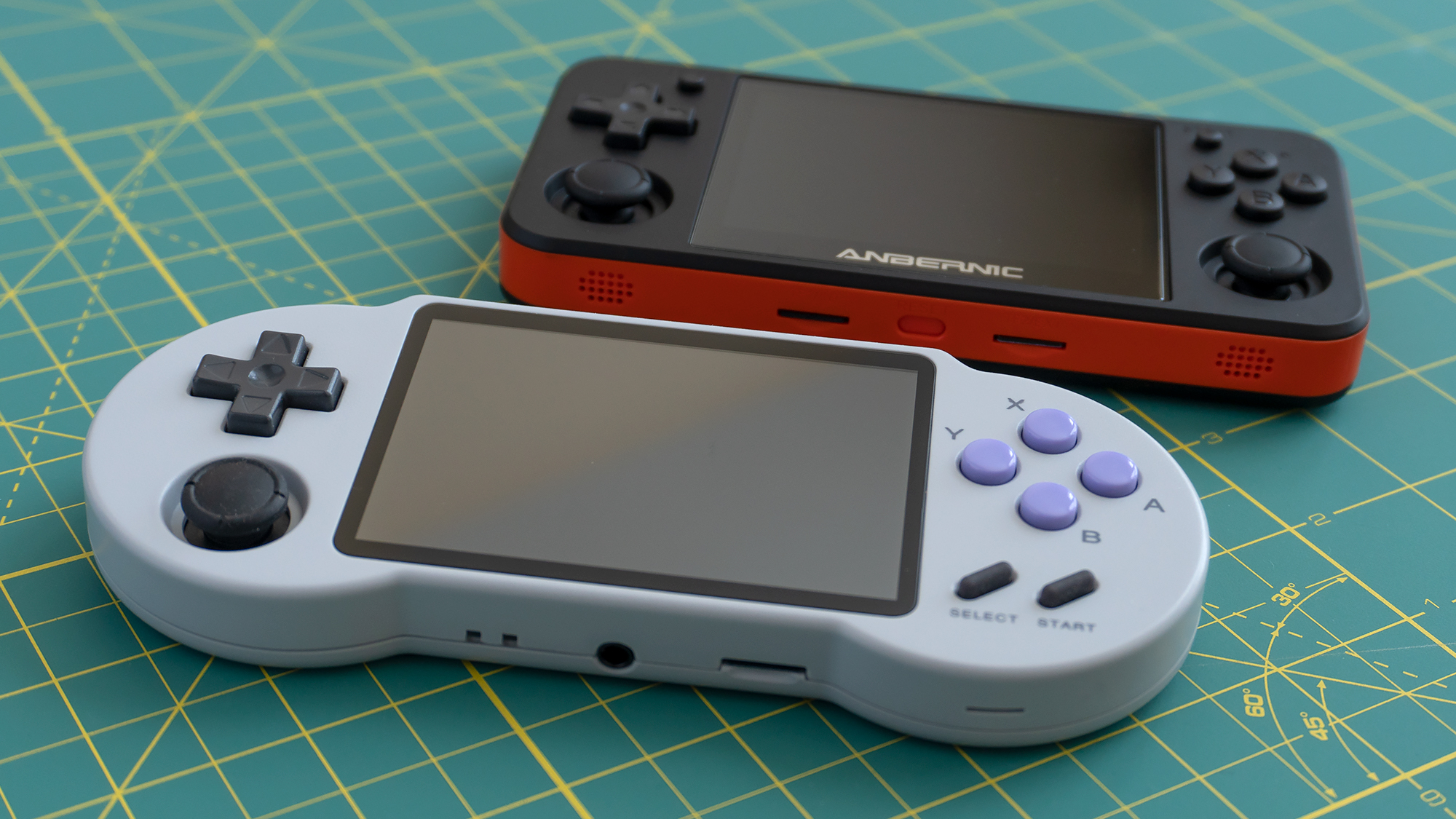
If you’ve been following the handheld emulator scene for the past year and a half, the PocketGo S30 does bring a few new ideas to the table — I’d love to see those shoulder buttons brought to other handhelds too — but it’s far from being the latest and greatest option out there. It handles everything from Game Boy games to titles from the NES, SNES, and Sega Genesis eras, and right up to the original PlayStation with ease. But with just half a gig of RAM it struggles with emulating more powerful consoles, while other handhelds already on the market can handle Sega Dreamcast, PSP, and even N64 games at this point.
If you’re more comfortable with the ROMs scene and emulation, we still recommend the Anbernic Retro Game 350P, which perfectly balances price, performance, playability, and design. But for just $US60 ($79) the PocketGo S30 is a great option for anyone thinking about getting into these types of devices. Its ease of use makes it very appealing, and with some small tweaks and a little more power, the hardware has a lot of potential to be competitive as the next generation of these handhelds start to appear.
